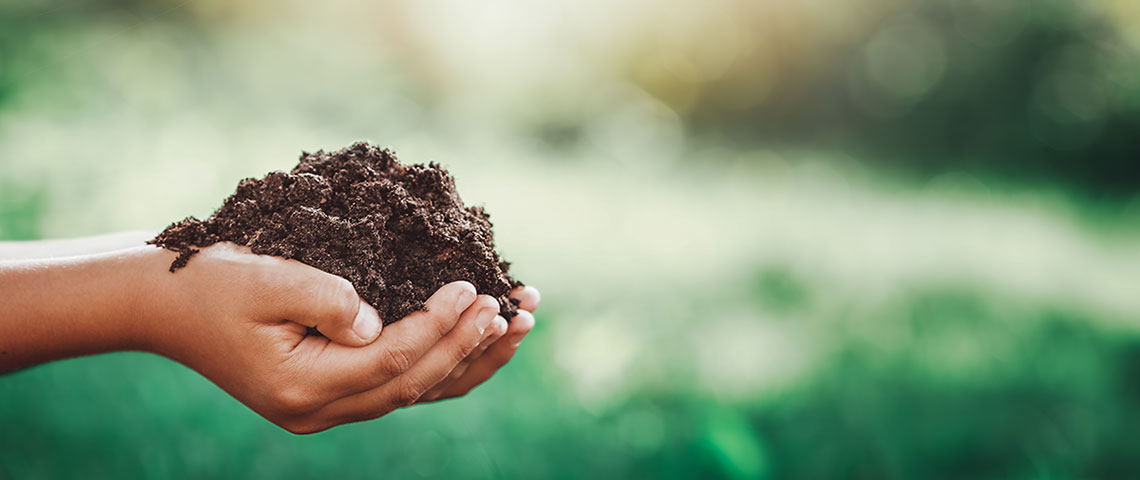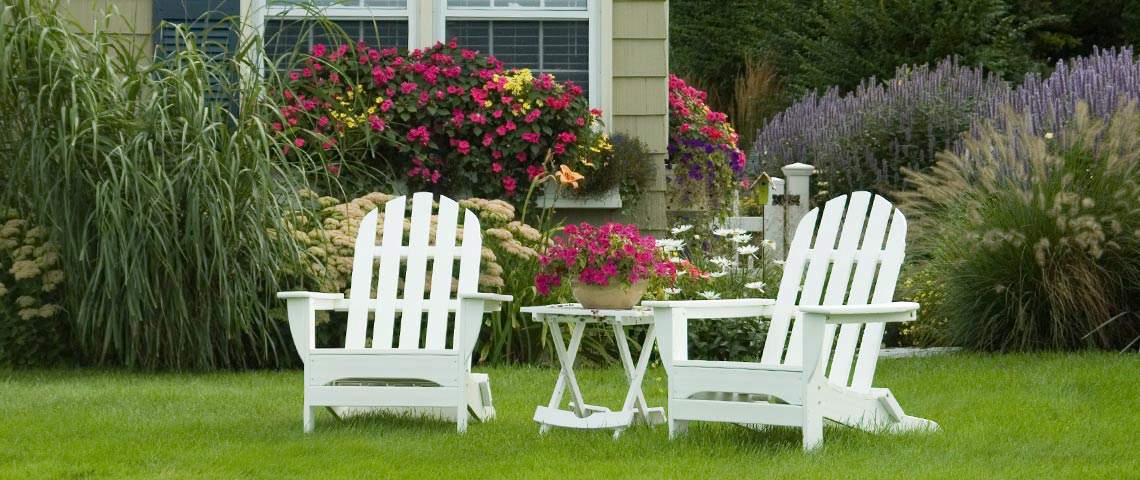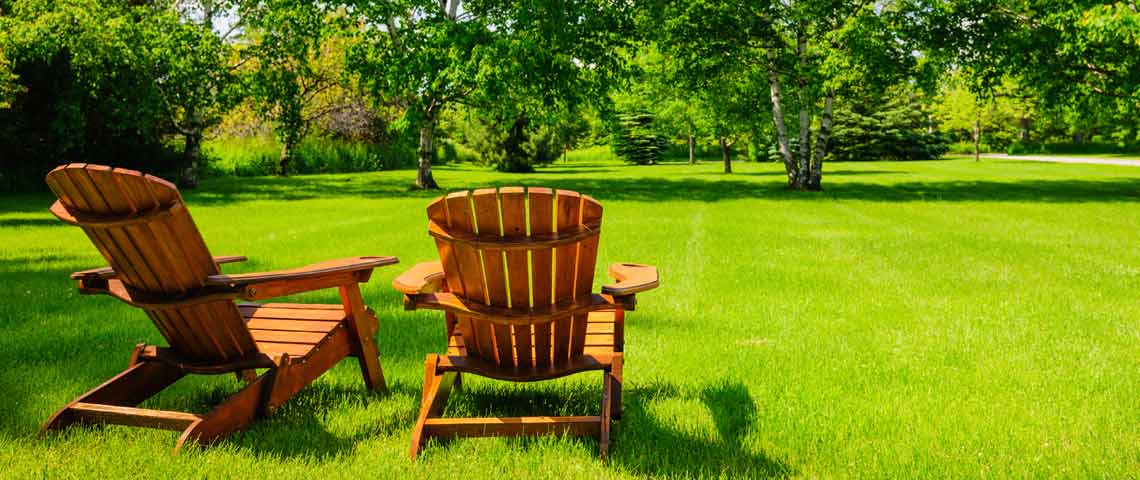How to Prepare Soil for Grass Seed
When prepping your yard for a grass seed project, it pays to look beyond the surface to the soil underneath your future lawn. Healthy soil is the key to beautiful, lush grass — when soil health suffers, your lawn does the same. By understanding how to prepare your soil before planting grass, you help ensure soil stays healthy and your new lawn grows green and strong.
- How Soil Testing Helps Prepare for Planting Grass
- How to Improve Soil Health and Prepare for Grass Seed
- How to Choose the Best Grass Seed for Healthy, Sustainable Lawns
- How to Keep Your Soil and Lawn Healthy After Seeding
How Soil Testing Helps Prepare for Planting Grass
Healthy soil is teeming with activity: Beneficial microorganisms are hard at work improving soil and plant health, and air, water and nutrients move freely to support and nourish plant roots. But your yard's diverse ecosystem can become unbalanced. When that happens, opportunistic lawn diseases move in, grasses struggle and before you know it, you're repairing bare lawn spots and yearning for a thicker, lusher lawn.
Guessing what your soil needs can be frustrating. A simple soil test helps answer your questions and confirm where soil preparation needs to begin. If you've never done a soil test, don't be intimidated. It's a straightforward process — and your local county extension office can help with tips and testing kits.
When you submit your test to the testing lab, let them know that you're planting grass seed for a lawn. They can tailor your test results and recommendations to optimize soil and lawn health and get you headed toward the lush grass you desire.
Test results include information about your soil type, organic matter, certain nutrient levels and soil pH, which influences whether nutrients stay available to your grass. The recommendations from your test will be specific to your unique soil. Follow them and you can have the best possible soil for your grass seed project.
Testing a sample of your soil confirms a starting point to prepare soil for seed.

How to Improve Soil Health and Prepare for Grass Seed
Depending on your soil's condition, you may need soil amendments to improve your soil and lawn health. Most grass types prefer soil pH in the slightly acidic 6.0 to 7.0 range. If your soil pH is too low, your lawn may need lime to restore pH balance and improve nutrient availability. If your soil pH is too high, you may need amendments to correct it. Recommended amounts vary dramatically between sandy soils and clay, so don't wing it. Too much or too little can harm soil instead of help.
Some soil improvements, such as lime, can go on the surface, which is ideal for existing lawns. But if you're starting a lawn from scratch, prepare your soil for seed by working organic matter and other amendments down into the soil. For example, incorporating gypsum along with organic matter can improve heavy clay soils, help eliminate drainage and compaction problems, and add essential plant nutrients in the root zone.
If your lawn has drainage problems, correct them before you seed. If you have compacted soil from foot traffic or equipment, aerate your yard before you proceed. If thick thatch is present, dethatch your lawn before you plant new grass. These steps help prepare soil for seeding and restore air, water and nutrient pathways so seed gets what it needs.
Grass seed will germinate on top of soil — if birds and other creatures don't get it first — but you won't get optimal results. Grass seed needs light to germinate, but it also needs good soil contact. Generally, grass seed should be planted about 1/4 inch deep. But by improving soil in the deeper layers, the root zone is ready for vigorous growth.
Core aeration removes plugs of compacted soil so it's ready for seeding.

How to Choose the Best Grass Seed for Healthy, Sustainable Lawns
The best grass seed for your seeding project depends on your grass growing region. Like other plants in your garden or landscape, lawn grasses have climate limitations. They also vary in resilience to common lawn disease and drought. Cool-season lawn grasses, such as Kentucky bluegrass and tall fescue, thrive in areas with cooler climates and colder winters. Common warm-season lawn grasses, such as Bermudagrass, flourish where summers are hot and winter is mild.
Enhance your lawn's sustainability with grasses up to the task. Water-conserving Pennington Smart Seed grasses were developed by our Oregon research facility for beauty and performance when conditions are good and when they're not. Once established, Smart Seed grasses need up to 30% less water than ordinary grasses — that's year after year for the life of your lawn — and stay green for up to three weeks without watering.
Pennington Smart Patch lawn repair products combine premium Smart Seed with fertilizer and mulch to help simplify lawn repairs and prepare soil for healthy grass growth. The beneficial microbials in these innovative products form symbiotic relationships with your grass. Soil health gets a big boost as microbials break down organic matter, improve soil structure, fix soil nutrients, improve nutrient uptake and stimulate grass seed growth.
Well-prepared soil and water-conserving grasses enhance lawn sustainability above and below ground.

How to Keep Your Soil and Lawn Healthy After Seeding
Proper watering is the most important part of post-seeding lawn care. To keep new seedlings and soil healthy, follow the watering instructions on your grass seed product's label. With Smart Seed , water daily — or twice a day if needed — to keep the soil evenly moist until new seed sprouts and grows about 3 inches tall. With Smart Patch, keep the seeding mixture moist until grass grows at least 1 inch. The mulch in Smart Patch turns lighter in color as it dries, so you always know when water is due.
Once your new grass nestles in, proper care and maintenance help keep your soil and lawn at their peak. If your seed product contains fertilizer, as with Smart Seed and Smart Patch mixes, you won't need more fertilizer at planting time. But once your grass establishes, it's time for a seasonal lawn care program and regular feedings with premium lawn fertilizers such as those in the Pennington Full Season family.
Avoid using herbicide-containing products, including crabgrass preventers and weed & feed products, before and after you seed. Weed preventers can inhibit all types of seed, including grass seed. Plus, herbicides can harm young grass seedlings, so always read and follow your product's instructions for seeding and your grass type. As a general rule, avoid weed preventers within 60 days of seeding. Wait at least three weeks and three mowing's before using weed & feed on newly seeded areas.
Mow your lawn regularly to maintain the recommended mowing height for your grass type. During hot conditions or times of drought, gradually increase the cutting height. This helps shade your soil, retain soil moisture and encourage grass roots to grow deeper. And because you took time to get soil ready for seeding, it's ready to receive.
By preparing your soil before planting grass seed, you set up your lawn for years of beauty and health. At Pennington, we've been helping American homeowners and lawn professionals grow beautiful, well-nourished grass for more than three generations — and we're ready for more. Let us help you grow the lawn you've been waiting for.
Always read product labels thoroughly and follow instructions




